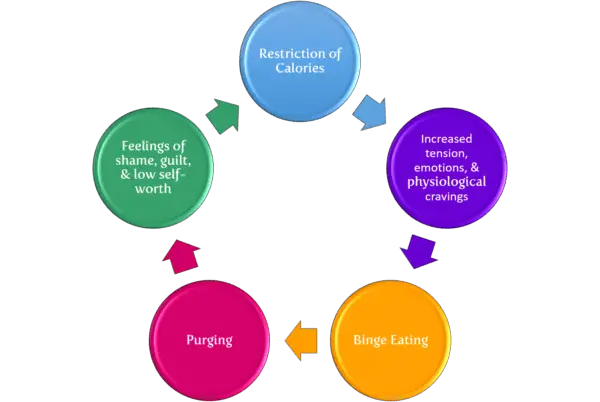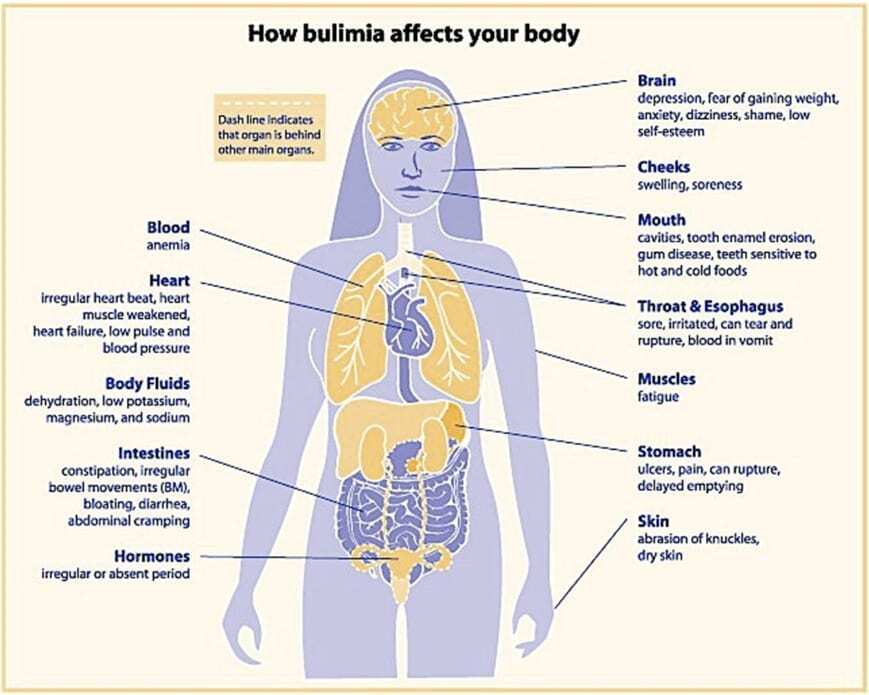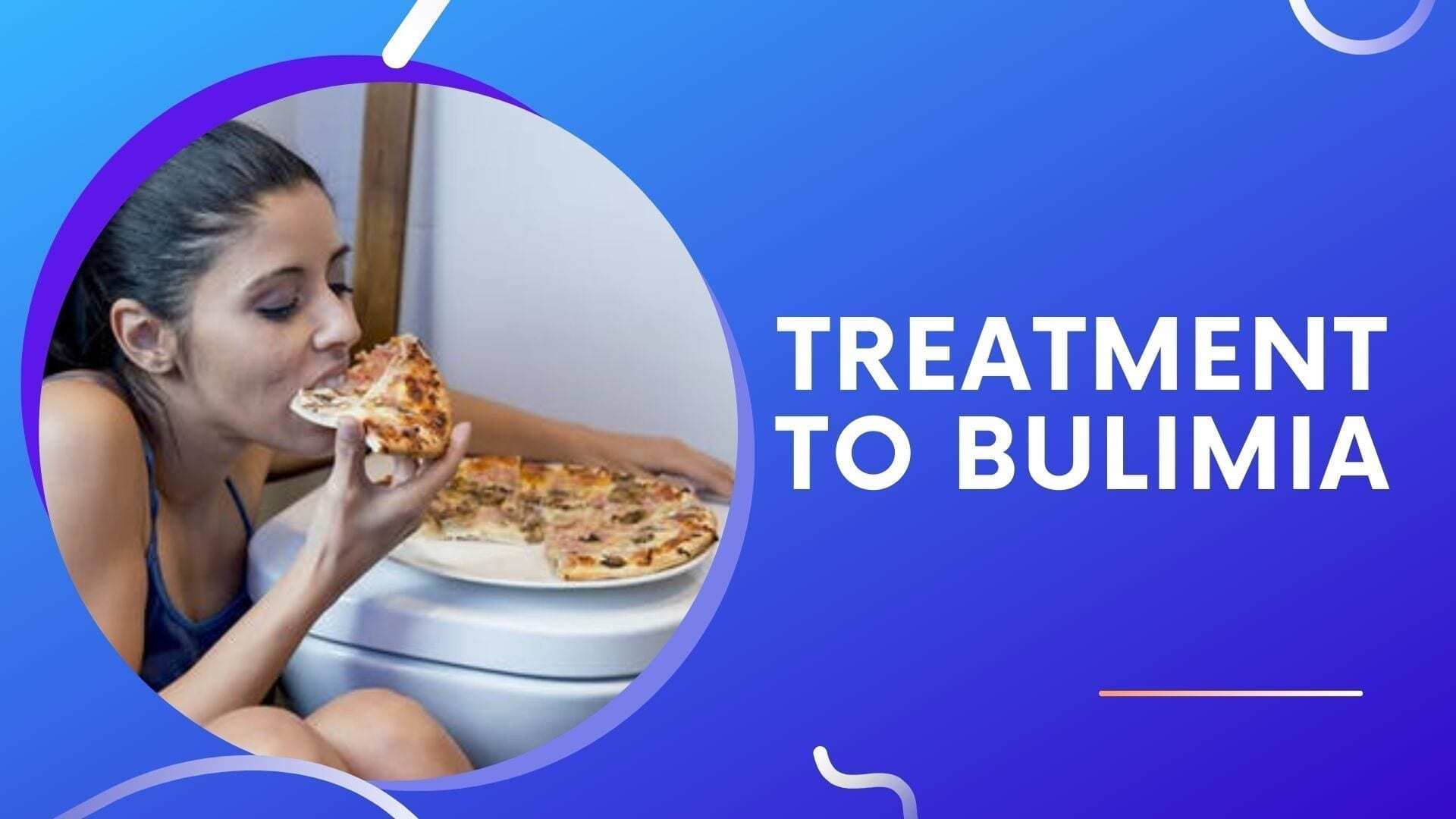Bulimia can be an incredibly secretive and destructive eating disorder, so let’s shine some light on its treatment.
It’s estimated that only 1 in 8-10 people with bulimia nervosa actually end up getting treatment for their eating disorder.
Nobody likes to admit they puke, or take laxatives. It’s embarrassing. Right?
Unfortunately, eating disorders are not understood and many people feel embarrassed to admit they struggle with food.
This usually just leads to more secrecy, more pain, and more psychological confusion.
This post will review the treatment for bulimia in broad strokes:
- General Overview Of Bulimia Nervosa
- What Is The Treatment Of Choice For Bulimia?
- What Is The Best Medication For Bulimia?
- How Long Does It Take To Treat Bulimia?
- What To Expect When You Are Being Treated For Bulimia
What Is Bulimia? General Overview Of Bulimia Nervosa
Let’s be clear on what this eating disorder called ‘bulimia’ is first:
- Fear of weight gain
- Restrictive eating and cravings
- Binge eating
- Guilt over binging
- Purging in various ways to rid yourself of the binged calories
Fear of weight gain
In our fatphobic society it’s understandable why people are afraid of being bigger. Unfortunately, the fear of weight gain often leads to eating disorders and other negative eating habits.
Restrictive eating
Because a bulimic is afraid to gain weight, they end up undereating. But this then triggers a survival reflex to eat food. This survival reflex changes a bulimic’s perception of food, to make food cravings irresistible.
Binge eating
Eventually the cravings become too much. Or one little slip up like eating slightly too much or something ‘unhealthy’ leads to full blown self-sabotage. Excessive food is eaten, oftentimes over 2000 calories in a single sitting.
Guilt over binging
Tremendous guilt rolls in after losing control. The bulimic’s fear of weight gain is all pervasive right now.
Purging in various ways to rid yourself of the binged calories
Physical vomiting, burning off all calories through exercise, taking laxatives, these are all ways people compensate for their binge. Unfortunately purging only keeps the belly starving and sets you up to repeat the cycle over and over again.
Summary: Bulimia is a vicious cycle characterized by restriction and purging. The symptoms of bulimia also include impaired mental health and/or physical health and possibly death. See graphic below.

What Is The Treatment Of Choice For Bulimia?
It depends. Eating disorders are tricky beasts.
As much as you may desire a single, obvious choice for treatment to bulimia, the truth is that the best eating disorder treatment for one person is not necessarily the best treatment for another.
For example, some people with bulimia really struggle with mindless eating and don’t know when their cravings are building up. Their body image is ok, but mindless eating is their Achilles heel.
For these clients I use Dialectical Behavior Therapy techniques, which include sensory activities to help them re-engage with their body.
On the other hand, other people know very well when cravings are building and wouldn’t be as well served with Dialectical Behavioral Therapy (DBT). Often, though, these clients may also have poor body image, poor mental health and negative thoughts.
With these clients I tend to use a Cognitive Behavioral Approach (CBT) to identify negative thoughts and challenge them.
Here Are Several Different Treatment Options For People With Bulimia:
In addition to CBT and DBT, there are a couple of other possible treatments.
Cognitive Behavioral Therapy (CBT)
This type of therapy involves identifying your thoughts and challenging them. Oftentimes bulimic thoughts will be distorted, overly perfectionistic or outright lies.
Acceptance And Commitment Therapy
This type of therapy involves identifying and accepting your thoughts and feelings. If you can accept thoughts and feelings that arise and pass and are different from who you are, then you can move towards your values which inspire commitment.
Dialectical Behavioral Therapy (DBT)
This type of therapy involves learning how to handle extremely intense feelings like anxiety or distress. It can also be useful to help a person who has difficulty feeling their body to better experience their natural emotions.
Intuitive Eating / HAES
Intuitive Eating and Health At Every Size (HAES) incorporate a variety of the above therapies but with an additional emphasis on the cultural factors that give rise to distorted body image, dieting and preoccupation with weight.
Summary: There are different types of therapy for bulimia.
Finally, here is a graphic which describes some of the above principles and some additional approaches that can fit into the above therapies.

Now you may be wondering about medication, in addition to therapy, so …
What Is The Best Medication For Bulimia Treatment?
Prozac may be prescribed as an antidepressant to help with bulimia treatment.
The New York Times published a health news article in YEAR about how prozac was approved by the Food and Drug Administration for bulimia.
This is significant because the Food and Drug Administration is notoriously difficult to gain acceptance from.
Oftentimes prozac is the only medication that is prescribed for bulimia. Please see your medical provider for more info on medications, advice, diagnosis or treatment for eating disorders.
Summary: Prozac is often considered the best medication for bulimia.

Now that you have an overview of the different treatment options, you might be wondering …
How Long Does It Take To Treat Bulimia?
Of course, the length of bulimia treatment depends on various factors:
- Genetics
- Past history of dieting
- Other factors such as the nature of family or other significant relationships, and career
- Past history of bulimia
However, a good rule of thumb in terms of the length of bulimia treatment is 1 year total.
It typically takes the first 6 months to stop or nearly reduce bingeing and purging, and the second 6 months to regain your confidence around food and establish competence in various therapeutic techniques.
Summary: Length of bulimia treatment depends on the person, but a good rule of thumb is 1 year.
And now that we have covered the various aspects of bulimia, let’s talk about some practical steps which may help.
What To Expect When You Are Being Treated For Bulimia Eating Disorder
Here are some actions and guidelines to treating bulimia that will be present in pretty much any form of therapy you decide to take to treat bulimia:
- Structured Eating Meal Plan: This is the hallmark of bulimia treatment. 3 meals per day and 3 snacks.
- Bulimia Education: Reading various books about bulimia to understand more about food restriction and why food restriction leads to urges.
- Nutrition: Eating a balance of carbs, fats and proteins at meals and eating enough food in general.
- Get support from family & friends: Isolation is a hallmark of bulimia. While talking to family or close friends can be difficult, it’s worth the tradeoff. Support groups are another option in most evidence-based treatment options as well.
- No skipping meals: Don’t skip your meals and snacks!
- Identify triggers: Study the patterns and situations that leave you feeling vulnerable. By being able to see clearly that XYZ seemingly always precedes a binge, you will find more motivation to avoid these things.
- Journaling: Oftentimes a record of thoughts is a good tool to see triggers. Since weight loss or fear of weight gain can be a trigger but easily missed, a thought journal can help to catch those thoughts.
- Distraction: How do you take your mind off the stress of life? Music? Games? You must have some healthy outlets for yourself!
- Practice compassion: Learning to forgive yourself is highly important. As you work to identify your thoughts, you will also start to hear your inner critic. As you hear your inner critic more, you’ll see how horrible this voice is and you can start practicing a kind inner voice instead.
How To Handle Vomiting
Despite practicing all the above factors and working on them in treatment, it’s likely that your bulimia won’t disappear immediately.
This means that you’ll continue to vomit in the short term as your body integrates to eating more regularly and as you learn to better manage your thoughts.
Here are some tips to handle vomiting during this phase:
- Drink fluids to replace lost water because vomiting will dehydrate you
- Don’t drink acidic foods like coffee or fruit juice
- Do not brush your teeth after purging because your enamel will wear away faster
- Don’t drink acidic foods like coffee or fruit juice
- Make sure you see your dentist regularly
The reason you want to protect your teeth enamel after vomiting is because the vomit contains stomach acids which wear away your teeth!
And overall the whole process of bulimia just wreaks havoc on your body!

In the Eating Disorder clinic where I work, sometimes clients have horrible teeth because of years of binge eating and it can be a real problem because then they have a harder time eating nutritious foods.
With that being said, please leave a comment down below with any remaining questions you have!



